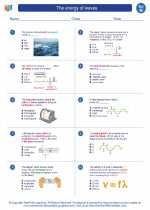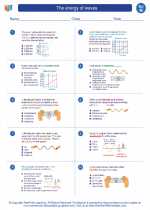Telescopes
Types of Telescopes
1. Optical Telescopes: These use lenses or mirrors to gather and focus light. There are two main types: refracting telescopes that use lenses, and reflecting telescopes that use mirrors.
2. Radio Telescopes: These are used to detect radio waves from celestial objects. They consist of large parabolic dishes to collect and focus radio waves.
3. Space Telescopes: These are placed in outer space to overcome the distortion of Earth's atmosphere. Examples include the Hubble Space Telescope and the James Webb Space Telescope.
How Telescopes Work
Telescopes work by gathering and focusing light or other electromagnetic radiation. The gathered light is then magnified to create a visible image of the distant object.
Key Components of Telescopes
1. Objective Lens or Primary Mirror: This is the main light-gathering element of the telescope.
2. Eyepiece: This is the element that magnifies the focused image produced by the objective lens or primary mirror.
3. Mount: The mount is the support structure that allows the telescope to be pointed at different objects in the sky and to track their motion.
Factors Affecting Telescope Performance
1. Aperture: The diameter of the primary lens or mirror, which determines the amount of light the telescope can gather.
2. Magnification: The degree to which the telescope can make an object appear larger. This is determined by the combination of the objective lens or mirror and the eyepiece.
3. Resolution: The ability of the telescope to distinguish fine details in the object being observed. This is affected by the quality of the optics and atmospheric conditions.
Applications of Telescopes
Telescopes are used for various purposes, including:
- Astronomy and astrophysics research
- Studying celestial bodies and phenomena
- Monitoring space debris and satellites
- Earth observation for environmental monitoring
Conclusion
Telescopes have significantly advanced our understanding of the universe and continue to be indispensable tools for scientists and astronomers.
.





